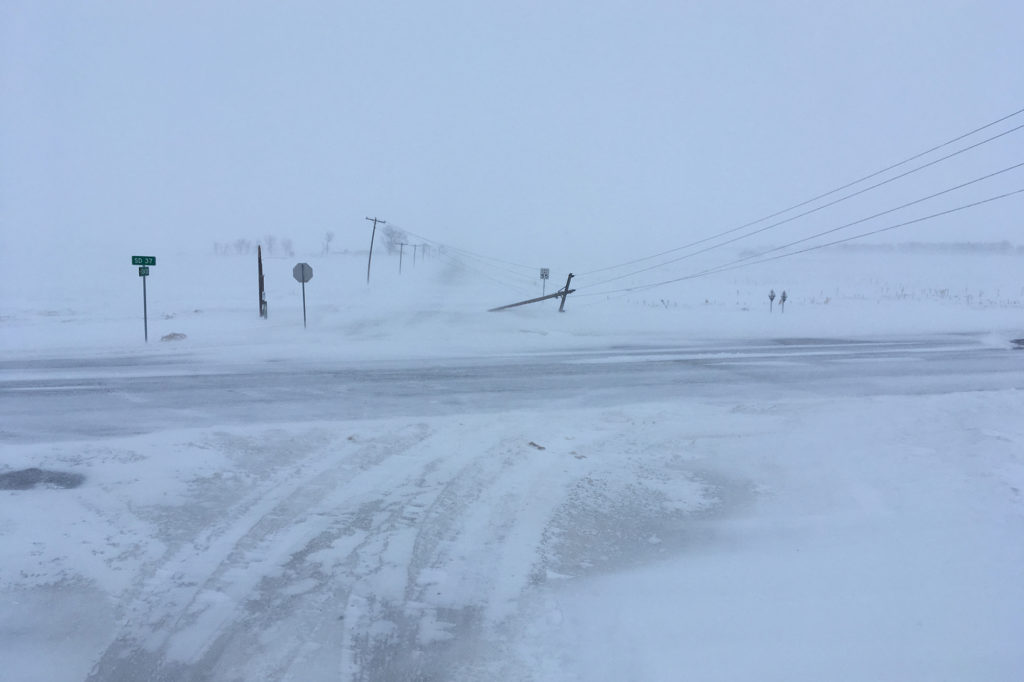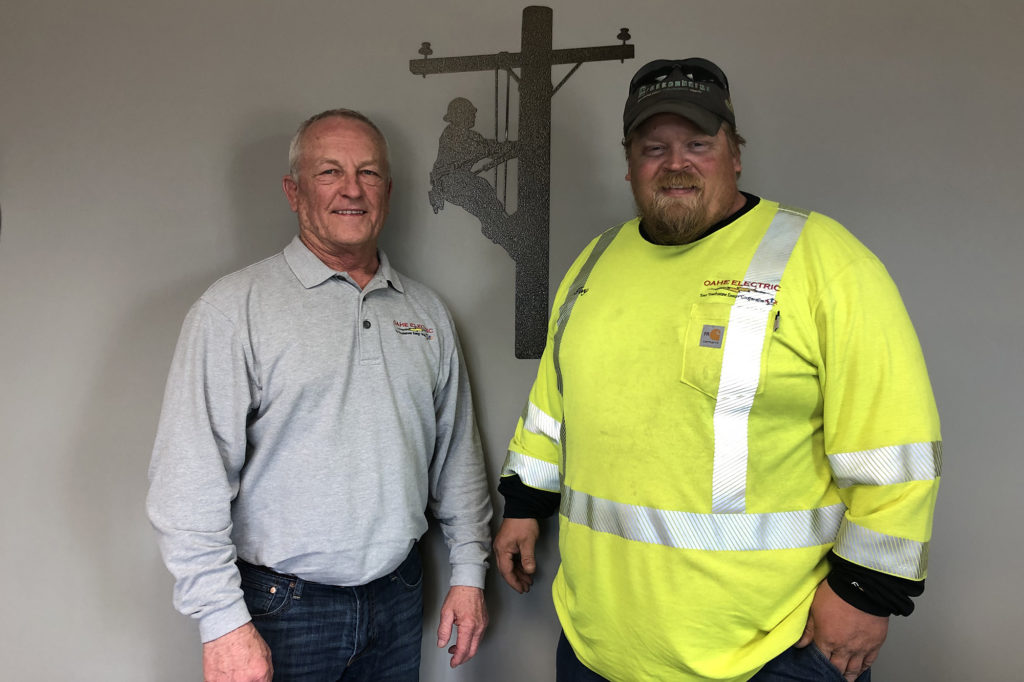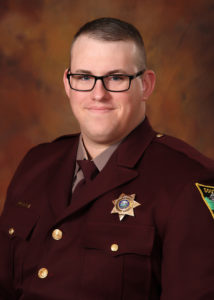
Police officers, firefighters and emergency medical technicians proudly describe themselves as “first responders,” but some South Dakota Highway Patrol troopers gladly share that title with an Oahe Electric Cooperative lineworker.
After a long day of rescuing stranded motorists on March 13, state trooper Zach Bruzelius was about 20 miles from his barracks in Pierre when snow-clogged roads let him drive no further. Stranded in blizzard conditions with wind chills dipping well below zero, Bruzelius needed help. With darkness closing in, hours into his ordeal, none had arrived.
“U.S. 14 had become impassable in multiple locations between Blunt and Pierre because of extreme drifting and absolute zero visibility,” said Sgt. Jon Stahl, who’d spent most of his shift in contact with patrolling troopers and highway crews.
With an officer stranded, Stahl called the South Dakota Department of Transportation, and two snowplows were dispatched to try to reach Bruzelius’ snow-bound patrol car.
Stahl and another trooper who’d just driven the same road headed out in his department-issued SUV, and between phone calls and radio chatter, word spread of Bruzelius’ plight. The Pierre police chief sent a city plow to try to reach the trooper.
As winds howled at more than 60 mph, piling drifting snow up on major highways, calls for help were still coming in from stranded motorists. With the help of the larger highway department snowplow, Stahl was able to rescue two other stranded motorists and send them back to Pierre with a local deputy.
“It was a complete whiteout with zero visibility,” said Stahl. “U.S. 14 was already drifted shut again in less than an hour. The snowplow rode up over the drift and became stuck. I was unable to go around the snowplow because the snow drift was about 4 feet deep.”
When the smaller plow got stuck, Stahl was forced to head back to Pierre, but he didn’t give up on his stranded man. Radioing the state police command center, Stahl had the dispatcher contact Rodney Haag, general manager and CEO of Oahe EC in Blunt, about five miles from Bruzelius’ location.
“There’s a bank and a store, a little grain elevator,” said Haag. “Then there’s our office and an elementary school, and that’s about all that’s in the town.”
But with fewer than 3,000 meters, Haag has the equipment and staff to keep the lines up and electricity flowing to his members, including the tracked rough terrain vehicle his operations staff uses to patrol backcountry rights of way.

“I called one of my linemen here in town and asked him if he’d be willing to go,” said Haag. With 20 years of experience as a journeyman line technician, Torry Smith knows the area and just how harsh weather conditions can get, but he headed right out. The RTV’s only passenger seat was empty and reserved for the stranded trooper.
With Haag keeping in touch by cellphone, Smith and Bruzelius were back in Blunt three hours later, arriving as winds howled and blowing snow continued to pile up.
“I told Smith to bring him to my house and he could spend the night with me,” said Haag. “He drove right over in the RTV because streets were so clogged with snow in town, nothing else could have gotten through.”
Blizzard conditions continued for another 24 hours, keeping highway crews and state police busy rescuing stranded motorists and clearing roads. Stahl reached Haag’s home early March 15 to pick up Bruzelius, and his patrol car was recovered and towed back to Pierre later that day.
South Dakota Highway Patrol officials say things could have gotten even worse for the trooper. His cruiser stalled out at least once before his rescue, and there was also the risk of carbon monoxide exposure due to snowpack in and around the stranded vehicle, wrote Capt. Robert Weinmeister, district commander in a commendation letter to the co-op.
“South Dakotans are always willing to lend a helping hand to someone in need. On this occasion, we were the one with the need,” Weinmeister wrote. “You had the equipment and the willingness to provide us the help.”
Derrill Holly is a staff writer at NRECA.
